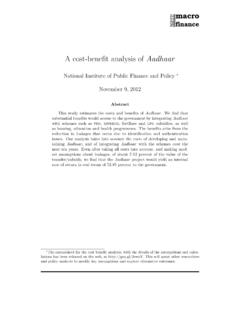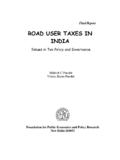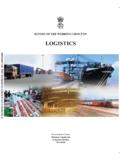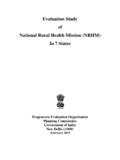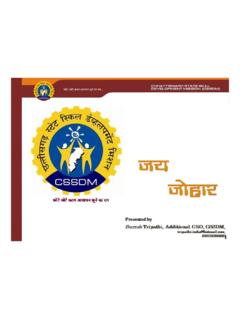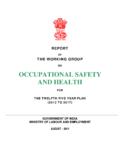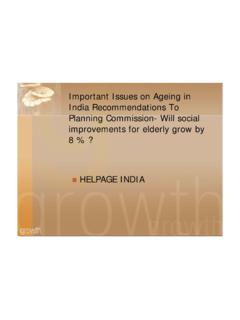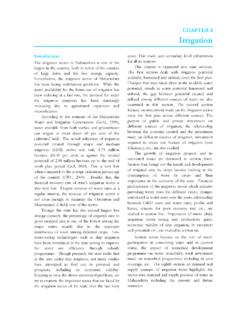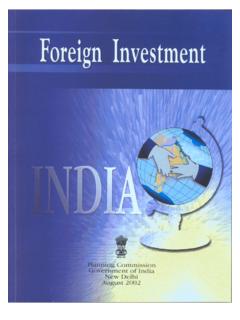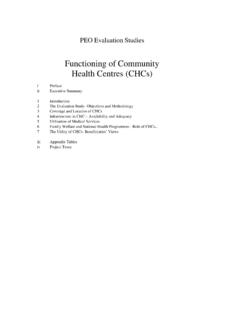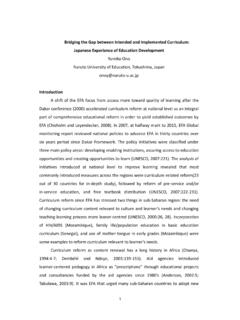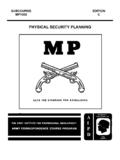Transcription of A Study on Child Labour with Special reference to …
1 1 Confidential | Copyright Prognosys e Services Pvt. Ltd. 2012. All right reserved. A Study on Child Labour with Special reference to Child Labour Project (NCLP) Impediments and Policy Interventions Study Conducted By: Prognosys e Services Pvt. , Uttar Pradesh. This Study has been sponsored by: Socio Economic Research Division, Planning Commission, Government of India 2011- 2012 2 Prognosys has received the grants-in-aid under the SER scheme of the Planning Commission to produce the document. Planning Commission is not responsible for findings or opinions expressed in the document prepared. This responsibility lies with the Prognosys e Services Pvt. Ltd. 2011- 2012 3 Table of Contents Chapter 1: Background and Introduction to NCLP .. 7 Hazardous Child Labour .
2 19 Chapter 2: Objective of the Study .. 27 Chapter 3: Methodology .. 29 Chapter 4: Executive Summary and Recommendations .. 34 Chapter 5: Respondent Profile .. 51 Chapter 6: Evaluation of NCLP Program .. 61 Chapter 7: Special Schools: A Rehabilitation Centre for Child Workers .. 90 Chapter 8: Impact of NCLP on living conditions of rescued children.. 127 Chapter 9: Assessment of Condition of Child Labour working in different hazardous sectors .. 131 Chapter 10: Annexure 1 List of NCLP Schools surveyed .. 136 Chapter 11: References .. 146 2011- 2012 4 List of Tables ParticularsPage :1 Work Participation of Children 2009-1011 Table:2 Estimate of Trends in India s Child Labour by Rural-Urban, 1983-2009/10 (in millions) 17 Table:3 Sectoral Distribution of India s Child Labour , 2009-1018 Table:4 List of districts where Special schools are in operation25 Table:5 Parameters for Project Society 31 Table:6 Parameters for NCLP Schools: 32 Table:7 Ranking of the evaluated districts36 Table:8 Comparative overall performance of the District Project Societies and the Project office on the various combination of parameters.
3 39 Table:9 working condition of schools on the various parameters41 Table:10 Parameters of NCLP Project Societies & schools43 Table:11 Key respondents53 Table:12 Breakup of number of schools covered in each of the districts of 6 :13 Student and Parents Profiling 57 Table:14 Administrative structure of District62 Table:15 District Project Office Infrastructure66 Table:16 Performance of Districts of Bihar74 Table:17 Performance of Districts of Chhattisgarh and Karnataka74 Table:18 Performance of Districts of Rajasthan:75 Table:19 Performance of Districts of Jharkhand76 Table:20 Performance of Districts of Uttar Pradesh76 Table:21 Convergence 89 Table:22 NCLP program for Rescued Children128 Table:23 Percentage of regular interactions of parents with the teachers of Special school 129 Table:24 Percentage of regular interactions of parents with the teachers of NPCL schools 129 2011- 2012 5 List of Figures Particulars Page No.
4 Figure:1 District Selected 52 Figure:2 Respondents 53 Figure:3 Count of school 54 Figure:4 Count of Respondents 56 Figure:5 Girls Vs Boys 56 Figure:6 Age Wise Distribution 58 Figure:7 Religion Wise Distribution 58 Figure:8 Caste Wise Distribution 59 Figure:9 Standard of Living - Type of House59 Figure:10 Standard of Living - Type of Ownership 66 Figure:11 General composition and functional diagram of project society 63 Figure:12 Periodicity of Meeting 64 Figure:13 Frequency and preodicity of PS Meetings 65 Figure:14 Availability of Project Directors67 Figure:15 Availability of Staff as per Guidelines 67 Figure:16 Sanctioned Staff is Adequate 68 Figure:17 Master Trainers Deployment 69 Figure:18 Background Preference of Master Trainer 69 Figure:19 Frequency of Health Camps 70 Figure:20 Type of Problems faced in Appointment of Doctors 71 Figure:21 Conduct Survey at Regular Interval 72 Figure:22 Total Survey Conducted 73 Figure:23 Frequency of AGP 78 Figure:24 Target Groups79 Figure:25 Communication Medium Used 79 Figure:26 PS members involved in Selection of Teachers 81 Figure:27 Specific Format for Reporting 83 Figure:28 Frequency of Report Submission 84 Figure:29 PD visits accompanied by Sr.
5 Officials85 Figure:30 Frequency of Visits of Sr, Officials from other Departments 85 Figure:31 Efforts Made Towards Convergence 87 Figure:32 List prepared of the parents to be benefited under different programmes 88 Figure:33 Infrastructural Facilities 92 Figure:34 Play Grounds in Schools 93 Figure:35 Building status 93 Figure:36 Level of Education 94 Figure:37 Number of Rooms 94 Figure:38 Ventilation in Schools 95 Figure:39 Availabilty of Electricity 96 Figure:40 Lighting in Class rooms 96 Figure:41 Toilet facilty 97 Figure:42 Drinking water99 Figure:43 Furniture Facility 100 Figure:44 Sitting availablity 101 Figure:45 Attendance Pattern 102 Figure:46 Teaching & Learning Aids 104 Figure:47 Teachers regularity 1052011- 2012 6 Figure:48 Seprate teachers for Different Subjects 105 Figure:49 Schools open daily 106 Figure:50 Vocational Training 109 Figure:51 Vocational Trainer trained 110 Figure:52 Training of Teachers 111 Figure:53 Joyfull Method for Teaching 112 Figure:54 Regularity in Mid-Day Meals 113 Figure:55 Mid-Day Meal cooked in School 114 Figure:56 Meals Cooked by 114 Figure:57 Inspection of Mid day Meal 115 Figure:58 Meals Distribution 116 Figure:59 District Wise Performance 118 Figure:60 Bank Account opened 119 Figure:61 Who keeps Pass book 119 Figure:62 Present withdrawal system is helpful 120 Figure:63 Main-Streaming of Students 121 Figure:64 Curriculam Structure 122 Figure:65 Health Check-UP 123 Figure:67 Examination by Doctors 124 Figure:68 Frequency of Doctors Visit 125 Figure:69 Regular Parent's Teacher interaction happens128 Figure.
6 70 State wise condition of Child Labour 132 Figure:71 Condition of Child Labour working in different hazardous sectors132 Figure:72 Family Size wise Child labor 133 Figure:73 Illiteracy Rate of Parents 133 Figure:74 State wise Illiteracy Rate of Parents134 2011- 2012 7 Chapter 1: Background and Introduction to NCLP 2011- 2012 8 Today, throughout the world, around 215 million children work, many full-time. They do not go to school and have little or no time to play. Many do not receive proper nutrition or care. They are denied the chance to be children. More than half of them are exposed to the worst forms of Child Labour such as work in hazardous environments, slavery, or other forms of forced Labour , illicit activities including drug trafficking and prostitution, as well as involvement in armed conflict.
7 In many countries Child Labour is mainly an agricultural issue. Worldwide 60 percent of all Child labourers in the age group 5 - 17 years work in agriculture, including farming, fishing, aquaculture, forestry, and livestock. This amounts to over 129 million girls and boys. The majority ( ) of Child labourers are unpaid family members. In agriculture this percentage is higher, and is combined with very early entry into work, sometimes between 5 and 7 years of age. Child Labour refers to the exploitation of the Labour of children who are either too young to work, or are of working age but work under conditions that subject them to risk. It is an unfortunate reality that children worldwide are often forced to undertake work that is physically, psychologically and morally damaging to them.
8 Nonetheless, not all work performed by children is classified as Child Labour . In fact, some light work that does not interfere with the Child s development, their education, or health, such as helping parents around the home, or earning pocket money outside of school hours or on holidays, can be a positive experience for The term Child Labour therefore does not generally apply to children between the ages of 12-14 that engage in light work or to children between the ages of 15-17 who work in non-hazardous conditions. Child Labour is a cause and consequence of poverty and education and training is crucial to breaking this cycle. At the same time, interventions on education and training must be integrated with other interventions to effectively remove children from hazardous work.
9 This includes measures which address poverty and underdevelopment, inadequate health and social policies, weak Labour market institutions, inadequate legislation and an inadequate enforcement of laws. Both supply side factors such as the role of poverty in compelling parents to send their children to work, and demand side factors such as the way a society organizes its production processes help determine the extent to which children engage in Child Labour . Social exclusion mechanisms are another strong factor that keep children out of school leading them to work. In many cases, children in the worst forms of Child Labour belong to the most discriminated strata of society in 2011- 2012 9 terms of ethnicity and culture. Displacement resulting from a health crisis, violent conflict, civil strife or natural disaster leaves children with few alternatives.
10 Child Labour is exacerbated by an increasing demand coupled with an increasing supply of Child Labour from poor families especially in rural areas. Child Labour has long been recognized as a major obstacle to achieving decent work. In 1992, the ILO launched its International Programme on the Elimination of Child Labour (ILO-IPEC) to provide technical cooperation to member States in finding solutions to this problem. We are making progressin the fight to eliminate Child Labour , however there are still many children who enter the workforce too soon. Of particular concern in this region are the 122 million children aged 5-14 forced to work for their survival. Over two-thirds of the Child Labour is in Asia and the Pacific. The decimal Census and the National Sample Survey are the two major official sources of data on Child employment.
